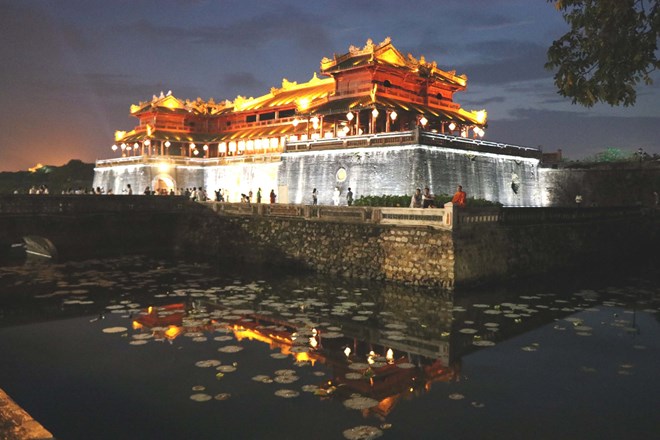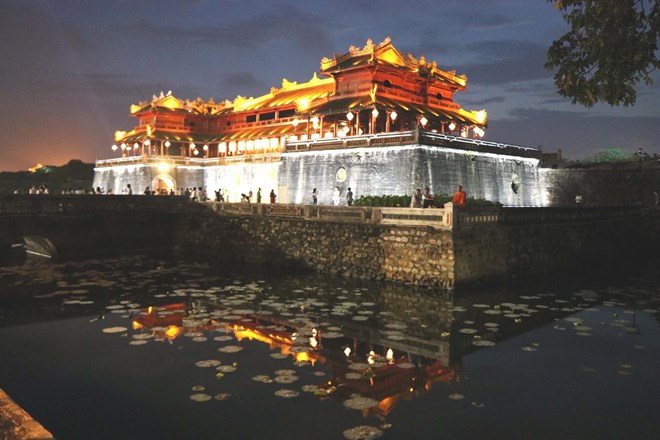



The Imperial
Citadel of Hue is decorated with colourful light at night (Photo: VNA)
In the first four months of 2018, the central province welcomed 1.89 million
tourist arrivals, including over 750,000 foreigners – up 12.7 percent year on
year. Local accommodation facilities earned some 557.1 billion VND (24.4
million USD) in tourism revenue, rising by 13.92 percent from the same period
last year.
Notably, more than 400,000 tourists came to the Hue Festival 2018 from April 27
to May 2, and about half of them were foreigners.
Deputy Director of the provincial Tourism Department Nguyen Van Phuc said Thua
Thien-Hue aims to attract 4 – 4.2 million visitors this year, up 10 – 12
percent, with about 40 – 45 percent being foreign vacationers. It hopes to
record a 15-percent increase in tourism revenue to 4.2 – 4.3 trillion VND
(184.1 – 188.5 million USD).
To this end, he noted, the province has been carrying out a number of
activities like decorating Ky Dai (Flag Tower) with 1,000 LED lights, firing
cannons on Ky Dai, and organising night activities to change the impression of
Hue as a "sleeping early” city.
Aside from improving existing tourism products and inventing new ones, it is
also working to create series of cultural, arts and sports events, organise
periodical festivals, and protect the environment to charm tourists.
To explore new tourist sources and maintain traditional ones, Thua Thien-Hue
has coordinated closely with airlines, other Vietnamese localities, and foreign
destinations to open direct flights and new tours. Notably, it has created
favourable conditions for airlines, major businesses and travel companies to
offer low-cost and charter flights linking Hue city with big cities in Vietnam
and other countries, especially potential markets in Europe and North Asia.
Phuc said the province has worked with the Vietnam National Administration of
Tourism to organise fam trips and press trips for foreign travel businesses and
press outlets from key and potential markets in Europe, the Republic of Korea,
Japan, Southeast Asia, North America, and Australia.
Meanwhile, it is also calling for and selecting strategic investors in tourism
projects and providing the best possible conditions for major projects to help
promote local attractiveness to holidaymakers.
Hue city in Thua Thien-Hue was the imperial capital of Vietnam under the Nguyen
Dynasty in over 100 years.
It is home to five UNESCO-recognised heritages, namely the Complex of Hue
Monuments (World Heritage Site), Nha nhac – Vietnamese court music (part of the
Representative List of the Intangible Cultural Heritage of Humanity), the
woodblocks of the Nguyen Dynasty (part of the Memory of the World
Programme), the imperial archives of the Nguyen Dynasty (part of the Memory of
the World Programme), and the Royal Literature on Hue Royal
Architecture (part of Documentary Heritage in the Memory of the World
Programme in the Asia-Pacific region).
Source: VNA